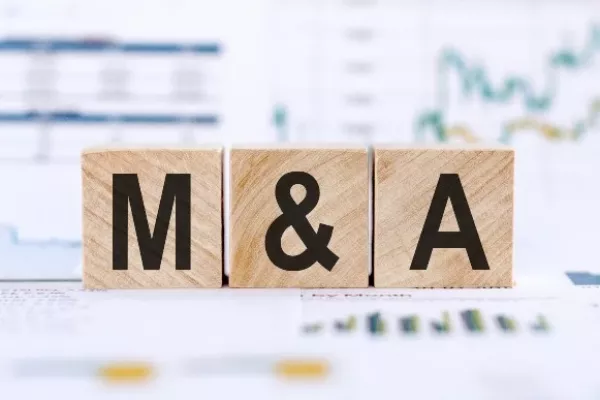In this blog, we will discuss about tips to make M&A Due Diligence Processes More Successful. The onset of the coronavirus pandemic in 2020 prompted many businesses to work remotely. Despite this shift, the Wall Street Journal claimed that deal-making in the aftermath of the epidemic is “soaring”: worldwide corporations signed over $1 trillion worth of transactions in Q3 2020, compared to $762.67 billion in Q3 2019.
How are businesses advancing M&A due diligence at this period? Although technology is the most important aspect in accelerating due diligence in a remote setting, there are additional procedures that can help speed up the process. This article discusses nine excellent techniques for performing remote due diligence. It aims to give practitioners a series of procedures – a structure for successful due diligence that FirmsData has seen the best practitioners are using.
Before the due diligence process even begins, some companies have a good idea of where it will end up. It all starts with technology.
1. Get Superior Technology
Virtual data rooms (VDRs) have made conducting legal and financial due diligence remotely possible for years, allowing users to securely share confidential documents with other businesses.
However, because in-person meetings and site visits are not always practicable, additional technology is required to conduct operational and environmental due diligence remotely. Virtual site inspections are conducted through video conferencing platforms such as Zoom, Webex, and Microsoft Teams.
Video also facilitates the replacement of face-to-face interaction, which has long been an essential element of the due diligence process. It’s essential to establish trust with any possible business partner, especially when millions or billions of dollars are at stake.
2. Develop Hypotheses
Developing some theories about the target company can help you get to the challenges faster. Financial, operational, compliance, and other aspects of due diligence will each have their hypothesis.
These should not be strictly followed, but rather as a guide to where your team wants to take the process. If a company’s revenues are largely obtained abroad, for example, your hypothesis might focus on contract enforcement concerns in countries with a bad track record, or even geopolitical issues.
It’s still just wide brushstrokes at this point.
3. Make an Overview of the Process
The hypotheses will eventually flow into a larger picture of the process. This is where technology excels. FirmsData allows users to create requests as you divide your working environment into different types of due diligence.
For example, audited financial statements are required in every due diligence procedure, thus requesting these documents would be one of the requests in the financial due diligence part.
Because each company’s process will change depending on its industry and specifics, having a broad understanding is essential.
4. Presume Longer Due Diligence Periods
When done in person, due diligence is already a lengthy process, and with good cause. Both parties want to make sure that the proposed arrangement makes sense and that the other side is representing their company honestly.
You should adapt your expectations and allow ample time for remote due diligence during the M&A process. Remote due diligence rarely goes as easily as in-person conversations, especially for firms that are still getting adjusted to new technology.
Buyers are increasingly requesting more time for due diligence, and exclusivity periods are now commonly 90 or 120 days rather than 60 days. Buyers will be more skeptical of sellers’ business models as a result of the pandemic, which will lengthen the process as more material will need to be provided and examined.
5. Assign Responsibilities
Before the due diligence process begins, it is critical to understand who will be responsible for what.
If your legal team lacks knowledge in a particular area, such as international law or IP legislation, make sure to recruit outside help.
You could need to bring in forensic accountants, for example, depending on the size of the target organization. The most critical aspect of the due diligence process is having the right people in place for each assignment because the right people will spot problems even if the procedure you devised missed them.
6. Create a Timeline / Track Progress
This may sound apparent, but the due diligence process has so many overlapping components that weeks can easily turn into months.
Due diligence timelines, like any other project, are critical. To help you through the tasks, use Gantt charts or even user-friendly technology like Trello. Along the journey, there will be bottlenecks and delays. This is par for the course.
However, keep in mind the phrase long used by due diligence practitioners: “whatever drags gets dirty.”
7. Communicate with Key Stakeholders Frequently
During remote due diligence, clear, frequent, and honest communication among stakeholders is critical. Because doing business remotely is less personal than doing business face to face, queries and concerns must be addressed as soon as possible to avoid getting cold feet.
In particular, keeping in touch with important stakeholders regularly will keep your company from going down the incorrect track during an M&A deal. Separate transient mistakes from deeper structural problems when constructing models and doing analysis during times of economic instability, and be sure to convey your insights to important stakeholders. Can a potential M&A partner’s recent performance be attributed solely to the epidemic, or are there other factors at play?
8. Conduct Regular Reviews
Regular evaluations are part of the best due diligence systems. For longer due diligence processes, this means every week, and potentially every couple of days for shorter ones.
The results of these evaluations will determine how the rest of the due diligence process will go (or indeed, if the process even should go ahead).
Also, keep in mind that both you and the target firm value time.
If material information is discovered that jeopardizes the agreed-upon valuation, inform them immediately away, saving you the time and effort of completing due diligence if they refuse to accept a purchase at a lower price.
9. Assess Strategic Fit
The strategic fit is a result of the previous processes. Being objective is essential. For example, in step 8, we discussed how the disclosure of information could result in a reduced valuation. With these calculations, be conservative.
Your goal is to improve your M&A process by being more knowledgeable and adding value.
The best method to do this is to do an open and honest assessment of strategic fit with the target organization, based on all of the data you’ve gathered.
FirmsData Virtual Data Rooms make remote due diligence simple and may be set up in as little as 10 minutes. Unlimited users are included in all subscriptions, as well as 24/7 support and flat-rate pricing. Book a demo with FirmsData and begin your free trial today.





